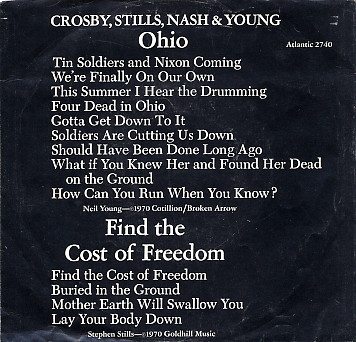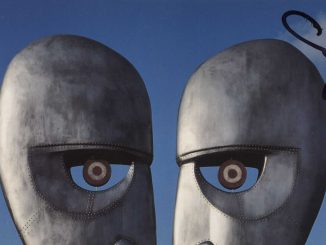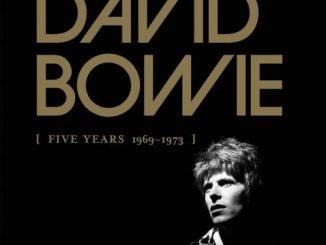
…..Crosby, Stills, Nash & Young released the protest single Ohio, written and composed by Neil Young in reaction to the Kent State shootings of May 4, 1970, when unarmed college students were shot by the Ohio National Guard. The guardsmen fired 67 rounds over a period of 13 seconds, killing four students and wounding nine others, one of whom suffered permanent paralysis.
Here’s the clip, you can read the full story below
On May 4, 1970, National Guardsmen squared off against anti-war demonstrators on the campus of Ohio’s Kent State University. The student protest was sparked by President Richard Nixon’s announcement on April 30 that U.S. troops would invade Cambodia, escalating the already unpopular war in Vietnam.
The deadly confrontation that followed would become known as the Kent State Massacre, and was immortalized in one of rock’s greatest protest songs, “Ohio” by Crosby, Stills, Nash & Young.
The day after Nixon’s Cambodia speech, a few storefronts in the town of Kent were trashed by protesters, and cops used tear gas to disperse the crowd. On May 2, Ohio Governor James Rhodes called in the Guard to restore order. That evening, a Reserve Officer Training Corps (ROTC) building was set on fire as students cheered; guardsmen responded with tear gas and arrested many demonstrators.
A large protest on the university Commons was planned for May 4. As a few thousand students and spectators gathered, undergraduate John Filo grabbed his camera and headed towards the crowd. Filo, who worked at the Kent State photo lab, hoped to catch a few compelling images of the event.
When protesters refused an order to either disperse or face arrest, guardsmen fired tear gas at the crowd. Many students fled the scene, and the Guardsmen followed them to a football field, where the students pelted the soldiers with rocks.
Shortly after noon, the Guardsmen moved back up a hill, as if to retreat. But when they reached the top, they turned and opened fire on the students with their M1 rifles. In just 13 seconds, anywhere from 61 to 67 rounds were fired and four students lay dead; nine more were injured.
Of the four students killed, only Allison Krause and Jeffrey Miller were part of the demonstration. Sandra Scheuer and William Schroeder were walking to class when they were gunned down. The iconic photograph of 14-year old Mary Ann Vecchio kneeling over the corpse of Jeffrey Miller would bring the Vietnam War home to America and win Filo the Pulitzer Prize.
“Blood was just pumping out of his body, on the hot asphalt,” Filo told Annenberg Digital News. Then he spotted Vecchio. “I could see the tension building in this girl and finally she let out with the scream, and I sort of reacted to the scream and shot that picture.”
Days later, David Crosby handed Neil Young a copy of Life magazine that featured Filo’s photo. Until then, CSNY were known for the gentle lyrics and intricate harmonies in songs like “Our House” and “Teach Your Children.” But Crosby told VH1 that Filo’s photo inspired the raw emotions of “Ohio.” “That girl leaning over the other kid in a pool of blood, and a look of, ‘Whaaa? What? How could this have happened?’ You know it’s shock … grief.”
“Crosby came and had the magazine with the Kent State killings,” said Young. “I had heard it on the news, what had happened, but Crosby always had a way of bringing stuff into focus.”
Young disappeared into the woods with his guitar. When he returned a few hours later, he’d written “Ohio.”
“Crosby called me up and said he’d booked a studio,” bandmate Graham Nash recalled in MusicRadar. “‘Neil just wrote this song, it’s f—ing fantastic. Get down here.’ Neil played me ‘Ohio,’ and it was ‘Holy f— – fantastic.’ We recorded it in an hour and a half.”
The B-side, Stephen Stills’ “Find the Cost of Freedom,” was recorded in a half-hour and the master was sent to Atlantic Records president Ahmet Ertegun. “We mixed it, gave him the two-track and said, ‘Ahmet, we want this out now,’” Nash remembered. “Ahmet put up an argument, but we were firm. Twelve days later, we put it out in a single sleeve with a copy of the Constitution that had four bullet holes on it.”
“The mood was just very intense,” engineer Bill Halverson related on his website. “They were bent on getting it right and were on a mission.”
Though Young would later write “Rockin’ in the Free World,” which criticized President George H.W. Bush, and “Southern Man,” which skewered that region’s racism, “Ohio” would be the singer’s first protest song. “It’s still hard to believe I had to write this song,” Young, a Canadian, explained in the liner notes of his Decade anthology. “It’s ironic that I capitalized on the death of these American students. Probably the biggest lesson ever learned at an American place of learning.”
Read more here
Looking for new and back catalogue vinyl, rare pressings and collectable vinyl and CDs?
Explore eil.com… the world’s largest online retailer of rare and out of print vinyl, CDs and music memorabilia – since 1987.




Be the first to comment